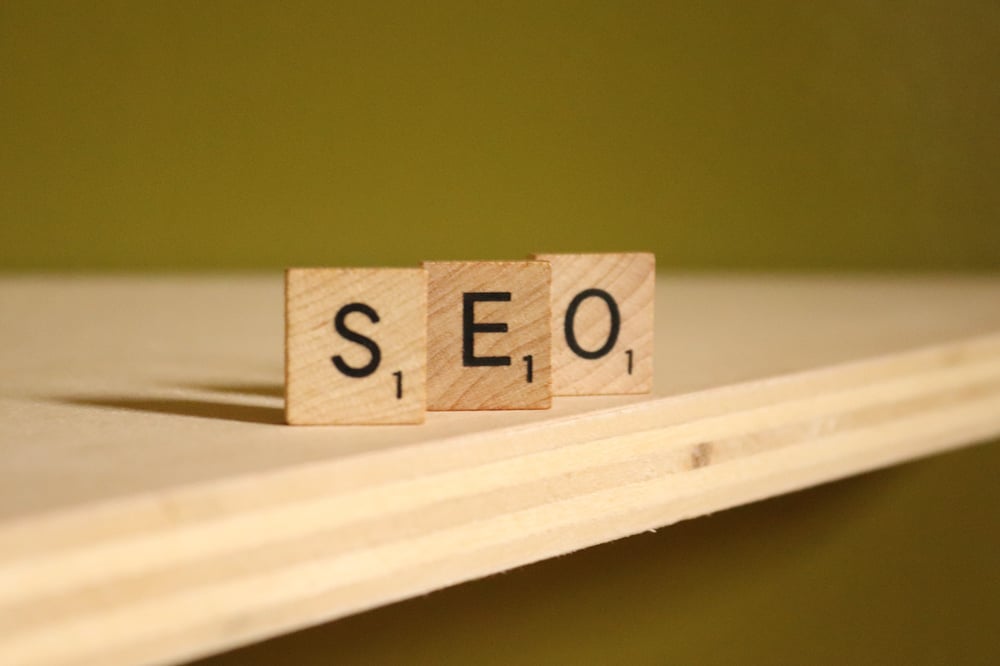I. Introduction
Are you the proud owner of a WordPress website that feels like the best-kept secret in your neighborhood? If you’re nodding in agreement, it’s time to add a dash of local SEO to your digital marketing recipe. In our hyper-connected world, local SEO has transitioned from being a “nice-to-have” to a “must-have” for businesses aiming to leave a mark in their local markets. As per WordPress.com, almost half (46%) of all Google searches are local. Hence, if your business thrives on local traffic, local SEO is your key to exposure, growth, and relevance in your community.
In this comprehensive guide, we will shine a light on local SEO. Consider this your digital magnifying glass, helping you focus on the strategies that can turn your WordPress site into a local sensation. We’ll begin by demystifying local SEO and why it’s a game-changer in the digital era. Next, we’ll explore a wealth of on-page and off-page optimization techniques, such as setting up Google My Business, using geo-targeted keywords, and crafting locally relevant content. Finally, we’ll share insights on how to monitor and fine-tune your local SEO performance to outshine your competitors.
Are you ready to become the talk of the town? Let’s embark on this exciting journey to local SEO mastery together! Remember, standing out in your local community can make all the difference in the digital world. So, fasten your seatbelts as we reveal the secrets to making your WordPress site the local star it deserves to be.

II. Understanding Local SEO Basics
A. What is Local SEO and Why it Matters
Local SEO, often brushed off as a trivial aspect of the broader SEO landscape, is, in fact, the very crux of a business’s online visibility for nearby customers. So, what’s this local SEO? It’s optimizing your online presence, particularly your website, to shine brightly in the local search results, enhancing its visibility for searches within your geographic locality. Imagine a quaint bookstore tucked away in a serene neighborhood. By leveraging local SEO, it could skyrocket its online visibility and draw in hordes of local book lovers.
Local SEO is the “bat signal” that guides these potential customers to your doorstep. Plus, research shows that local searches often lead to action—people are ready to buy or engage a service locally, making local SEO an absolute must for businesses with a physical presence or serving a specific geographic area. Can you afford to miss out on that traffic? We didn’t think so.
Moreover, local SEO is not just about attracting new customers; it’s also about building a loyal customer base. Your business consistently appearing in local search results builds trust and credibility among the local community. This can lead to repeat business and word-of-mouth referrals, which are invaluable for any local business.
B. How Local Search Works
You might wonder, “How does this local search work?” Local search is like your personal concierge, serving up results based on your location to give you the most relevant suggestions. Let’s say you’re searching for “best pizza in town.” Google or any other search engine will prioritize the results of pizza places closest to you. How neat is that!
The search engine considers factors like proximity, local reviews, local citations, and backlinks to whip up a list most relevant to the user. So, the more optimized your website is for these factors, the higher your chances are of claiming the top spots in the local search results.
But wait, there’s more! Search engines are getting smarter every day. They are now able to understand the context behind a search query. This means that even if a user doesn’t specify a location, search engines can still provide local results based on the user’s current location or search history. This makes optimizing for local search even more critical.
C. Key Ranking Factors for Local SEO
Now, to the million-dollar question, “What are the key factors that can turbocharge your local SEO?” The answer is multi-faceted.
An optimized Google My Business (GMB) profile is your first stepping stone. Picture it as your business’s online business card—informative, eye-catching, and most importantly, complete. Another piece of the puzzle is using local keywords, helping search engines to connect the dots between your business and local search queries. A website sporting locally-focused content that resonates with the audience can also help build local SEO.
Moreover, on-page optimization—like meta descriptions, headers, and structured data markup—plays a significant role in your website’s visibility to local searchers. Don’t forget about online reviews and ratings; they’re a sign of trust and popularity in the community. Local citations and backlinks from other local websites can also elevate your site’s local search visibility and authority.

III. Optimizing Your WordPress Site for Local SEO
A. Setting Up a Google My Business Account
1. Creating Your Listing
Setting up a Google My Business (GMB) account is akin to laying the cornerstone of your online presence. It’s like opening the doors of your brick-and-mortar store to the digital world. When local customers search for products or services you offer, your GMB listing is often their first interaction with your business. So, how do you make it count? First, head over to the Google My Business website and sign up. Add your business name, address, and phone number with precision. This is your chance to make a stellar first impression, so ensure that your business name is catchy and represents what you offer.
Next, choose the right category for your business. This is crucial as it helps Google understand what your business is about. Think of it as choosing the right neighborhood for your store. You wouldn’t want a bakery in an industrial area, would you? This step is essential for appearing in relevant local searches.
Lastly, add high-quality images. A picture is worth a thousand words, and this holds especially true for your GMB listing. Include photos of your storefront, products, and even your team. Make your business relatable and welcoming. Remember, this is your virtual storefront, so make it inviting.
2. Verifying Your Account
Verification is like a digital handshake between you and Google. It’s Google’s way of ensuring that you are the rightful owner of the business you claim. According to Yoast, Google might send a real-life postcard to your specified address to verify your location. Some businesses might also have the option to verify via phone or email. This is a critical step, as only verified businesses appear in local search results.
Once you receive the postcard, it will contain a code to enter into your GMB account. This completes the verification process. It’s a critical step, as only verified businesses appear in local search results. It’s like getting a stamp of approval from Google.
Remember, this step is not just a formality. It’s crucial to establishing trust with both Google and your customers. It’s like getting a stamp of approval from Google. So, take this step seriously, as it can make or break your online presence.
3. Optimizing Your GMB Profile
Now that you’re verified, it’s time to roll up your sleeves and optimize your GMB profile. According to Google Business Profile Help, local results are based on relevance, distance, and prominence. So, how do you make your business relevant and prominent? Start by ensuring that your profile is complete and engaging.
Add a detailed description of what your business offers. Be clear and concise. Remember, vagueness doesn’t rank or sell. Keep your focus, and be as transparent as possible. This is your chance to tell your story, so make it count.
Regularly update your profile with new photos and posts. Engage with your customers by responding to reviews. According to Google, high-quality, positive customer reviews can improve your business visibility and increase the likelihood that a shopper will visit your location. So, encourage your customers to leave reviews and take the time to respond.
B. Choosing and Using Geo-targeted Keywords
1. Importance of Location-based Keywords
In the realm of local SEO, the mantra is “location, location, location.” Your location is a vital aspect of your online visibility. Combining your product or service with location-based keywords can significantly boost your prominence in local search results. But it’s not just about adding your city’s name next to your product or service. It’s about understanding what your potential customers are searching for and aligning your content accordingly.
For instance, if you’re a baker in New York, instead of just using “bakery” as a keyword, use “New York bakery.” This instantly makes your business more relevant to local searches. But don’t stop there; think about neighborhoods, landmarks, and local terminology that could be part of the search queries. For example, if your bakery is near Central Park, you might use “bakery near Central Park” as a keyword.
Additionally, consider the intent behind the searches. Are people looking for a place to sit and eat, or are they looking for takeout? Understanding the purpose can help you refine your keywords even further. For example, “cozy bakery in New York” versus “New York bakery with fast takeout.”
2. Unveiling Local SEO Keywords with KWfinder
KWFinder is a powerful tool that serves as your guide in the vast world of SEO. It helps you discover long-tail keywords with lower competition levels, providing you with achievable and relevant keywords for your website. This tool is particularly beneficial for local SEO as it allows you to target your search to a specific city or region, helping you find keywords that resonate with your local audience.
The user-friendly interface of KWFinder simplifies the keyword research process, making it accessible even for SEO beginners. It offers more than just keywords; it provides crucial data on search volume trends, cost per click, and PPC competition. This data can be instrumental in shaping your local SEO strategy.
KWFinder stands out for its ability to perform local keyword research. This feature allows you to target your search to a specific city or region, making it invaluable for local SEO. By finding relevant keywords for your local audience, you can increase your website’s exposure and reach in your local market.
3. Incorporating Keywords into Your Content
Now that you have your keywords, it’s time to weave them into your content. But be careful; this is an art. The last thing you want is to stuff your content with keywords. It’s not about quantity; it’s about quality.
Incorporate your keywords naturally. Make them a seamless part of your content. Think of them as the spices in a dish. Too little and the dish is bland; too much and the dish inedible.
Also, don’t just focus on your written content. Incorporate your keywords into image alt text, meta descriptions, and URLs. Think of your website as a jigsaw puzzle, and your keywords are the pieces that will complete the picture.
Remember, SEO is not just about driving traffic; it’s about driving the right traffic. Choosing and using the right geo-targeted keywords can make your WordPress site a local SEO powerhouse.

IV. Enhancing Local Visibility with Off-Page SEO
A. The Power of Public Opinion: Online Reviews and Ratings
1. Encouraging and Managing Reviews
In the age of the internet, online reviews are the new word-of-mouth. Did you know 90% of customers read online reviews before visiting a business? That’s right! Online reviews are the digital footprints that either lead customers to your door or steer them away. So, how can you ensure that your business is basking in the glow of positive reviews? First, don’t be shy about asking your satisfied customers to leave reviews. You can even automate this process using an email marketing tool like AWeber. But wait, there’s more! Managing these reviews is equally important.
Now, let’s talk about the impact of these reviews. According to Forbes, online reviews are the best marketing channel for local businesses. They act like tractor beams, pulling in consumers precisely when they want to spend money. The article also mentions that 90% of customers say online reviews influence their buying decisions, and 94% will use a business with at least four stars. So, it’s not just about collecting reviews; it’s about earning stars!
But what if you get a negative review? Don’t panic. Responding to negative reviews gracefully and addressing the issues raised can turn a dissatisfied customer into a loyal one. Engaging with happy customers by thanking them can also build a positive brand image. Remember, your response to reviews is a reflection of your business values.
2. Responding to Positive Reviews Professionally: Appreciation and Engagement
Positive reviews are like gold dust for your business. They not only enhance your reputation but also attract more customers. But how do you respond to them? Start by saying thank you. This simple act of gratitude can go a long way in building lasting customer relationships. But don’t stop there; engage with the content of their review. For instance, if a customer praises your staff, let them know you will pass on the compliments.
Engaging with positive reviews shows you value customer feedback and are attentive to their experiences. It also encourages other customers to share their positive experiences. Imagine the ripple effect this can have on your business! Moreover, it humanizes your brand and shows that there are real people behind the business who care about customer satisfaction.
Lastly, use positive reviews as an opportunity to promote your business subtly. Mention an upcoming event, a new product, or service. However, make sure it’s done tastefully and in a way that adds value to the customer. Keep it short, genuine, and customer-focused. Remember, the way you respond to positive reviews is a reflection of your brand, so make it count!
3. Handling Negative Reviews Professionally: Turning Criticism into Opportunity
Moving on to the less rosy aspect of online reviews – the negative ones. Negative reviews can initially feel like a blow, but remember, they’re not a dead end. They offer a unique opportunity to showcase your commitment to customer satisfaction and problem resolution.
When responding to criticism, approach the review respectfully and professionally. Address the concerns raised and offer solutions or assistance wherever possible. This proactive approach can turn a disgruntled customer into a loyal one and impress potential customers reading your response.
Moreover, keeping your responses concise and clear prevents miscommunication and portrays your business as transparent and accountable. Regularly monitor your reviews on various platforms to ensure no feedback, especially negative ones, go unanswered. As challenging as they might be, handling negative reviews correctly can enhance your business’s credibility, improve your services, and boost your local SEO.
B. The Role of Local Citations in Off-Page SEO
1. Understanding the Concept of Local Citations
Local citations are like the unsung heroes of local SEO. They mention your business name, address, and phone number (NAP) on other websites. These could be business directories, social media, or review sites. But why are they important? Well, search engines like Google use these citations to validate your business. The more places your business is mentioned, the more credible it seems to Google.
But there’s a catch. These citations need to be consistent. Imagine the confusion if different websites listed different addresses or phone numbers for your business. Not only would this confuse potential customers, but it would also make search engines question the legitimacy of your business. So, consistency is key!
Now, let’s talk about the impact of local citations on your business. They help improve your local search rankings. When your NAP information is consistent across various platforms, it sends positive signals to search engines about your business’s legitimacy. This, in turn, boosts your rankings in local search results, making it easier for potential customers to find you.
2. The Art of Finding and Managing Citations
Navigating the vast digital landscape to find and manage your local citations might seem like a Herculean task. But worry not! Tools like Moz Local and Whitespark can be your guiding stars. These platforms scour the internet to identify existing citations and help you discover new citation opportunities. It’s like having a personal detective for your business!
However, finding citations is just the tip of the iceberg. Managing them is where the real work begins. Regular monitoring and updating are crucial to ensure accuracy and consistency. It’s essential to keep your information up-to-date, especially if your business changes relocation or new contact details.
Moreover, engaging with the platforms where your business is cited can also be beneficial. For instance, if your business is mentioned in a local blog, thank them. Build relationships with these platforms. Who knows? This could lead to more visibility and even collaboration opportunities in the future.
3. The Criticality of NAP Consistency
We’ve touched on this before, but it’s so important that it deserves its own section. NAP consistency is not something to be taken lightly. Imagine a potential customer trying to contact you, but they can’t because your phone number is incorrect on a directory site. Frustrating, right?
Inconsistent NAP information can lead to a loss of potential customers. But that’s not all; it can also negatively impact your search engine rankings. Search engines might get confused by the inconsistent information and, as a result, might lower your ranking in search results.
So, what can you do? Regular audits of your citations are a must. Check all the platforms where your business is listed and make sure the information is accurate and consistent. If you find any discrepancies, correct them as soon as possible. It might seem tedious, but it’s an investment in your business’s online presence and reputation.
C. Boosting Your Local SEO with Backlinks
1. The Impact of Local Backlinks
Local backlinks are like the cherry on top of your local SEO sundae. They are links from other local websites pointing to your site. Think of them as endorsements from your local community. They tell search engines that your content is valuable and relevant to the local audience.
But how do you get these coveted local backlinks? It starts with creating valuable content that resonates with your local audience. Participate in community events and write about them. Reach out to local bloggers and see if they are interested in featuring your business.
Remember, quality over quantity. A few good local backlinks can have a much more significant impact than many low-quality links. Focus on building relationships with other local businesses and platforms. Not only will this help in acquiring backlinks, but it will also strengthen your presence in the community.
Moreover, local backlinks can drive targeted traffic to your site. People specifically interested in your area or community are more likely to engage with your business. This targeted traffic is more valuable as it will likely convert into customers.
2. Strategies for Acquiring Local Backlinks
Building quality local backlinks is a strategic endeavor that requires a focused approach. It’s not just about getting a backlink but about establishing relationships that can lead to ongoing collaboration and mutual growth. Here are three strategies to consider.
Start by fostering connections within your local community. This could involve networking with local businesses, participating in local events, or sponsoring community initiatives. For instance, you could collaborate with other local businesses to create a “Local Partners” page or a “Businesses We Love” page on your websites. This not only provides an opportunity for backlinks but also strengthens your local presence and reputation.
Another effective strategy is guest posting or contributing articles to local websites, blogs, or online publications. This not only provides an opportunity for a backlink but also showcases your expertise to a larger local audience.
Finally, consider reaching out to local influencers or bloggers. A positive mention or review from them could result in valuable backlinks and a boost in local visibility. Remember, the goal is to build a solid local SEO foundation and forge meaningful relationships to yield continuous, mutual growth.
Remember, the aim is not just to acquire backlinks but to establish a strong local presence. So, while you’re focusing on these strategies, ensure that your NAP (Name, Address, Phone number) information is correct across all platforms, and create hyperlocal content that resonates with your local audience.
3. Monitoring and Analyzing Backlinks With Link Whisper
Link Whisper is your trusted companion in the journey of local SEO. It’s like a gardener for your website, helping you sow the seeds of local backlinks and nurturing them to flourish into a potent local SEO strategy. Regular monitoring and analysis of your backlinks are crucial to maintaining the health of your website’s SEO.
Link Whisper is a smart internal linking tool that uses artificial intelligence to suggest relevant internal links as you write your content. It helps you identify “orphan” content that lacks internal links and provides you with opportunities to build new links to these pages. This tool also allows you to quickly see and fix broken links on your site, ensuring a healthy backlink profile.
In the marathon of local SEO, persistence and adaptability are key. With a reliable tool like Link Whisper and a continuous improvement mindset, you’re well on your way to achieving success in local SEO.

V. Monitoring and Improving Local SEO Performance
A. Using Google Analytics and Google Search Console
1. Setting up and configuring the tools
Did you know that Google offers fantastic tools that can help you track and improve your local SEO performance? Yes, I’m talking about Google Analytics and Google Search Console. These are invaluable resources for any local business seeking to optimize their online presence. For WordPress, you can use the MonsterInsights plugin. Once you’ve set up these tools on your WordPress website, you’ll be privy to a treasure trove of data. Just make sure you’ve enabled location-based tracking and reporting so you can get the insights you need.
As daunting as setting up these tools might initially seem, trust me, it’s a piece of cake. Google Search Console, for instance, is a free tool that helps you monitor your website’s search performance and identify issues to improve your presence on Google Search. On the other hand, MonsterInsights makes it easy to connect your WordPress website to Google Analytics, and it’s especially great for beginners. With features like Universal Analytics & GA4, Real-time Stats, and Enhanced Ecommerce Tracking, MonsterInsights is a powerhouse. With these tools, you can track your website’s traffic, engagement, and search performance in minute detail. This data will be your guide, shedding light on what’s working and where there’s room for improvement in your local SEO strategy.
Now, let’s talk about the nitty-gritty. To set up Google Search Console, you must open an account, verify website ownership, and add a sitemap. For MonsterInsights, you just need to install the plugin, connect it to Google Analytics, and you’re good to go. The initial setup is just the beginning; the real magic happens when you analyze the data. So, roll up your sleeves and get ready to dive into the ocean of analytics!
2. Tracking local traffic and engagement
Now that our tools are ready, it’s time to look closer at your local traffic and engagement. Within MonsterInsights, you can analyze several metrics – like the number of local visitors, time spent on the website, pages visited per session, and even bounce rates. These will help you understand how local users interact with your website and content.
The beauty of MonsterInsights is that it shows you raw data and tells a story. As you dig into your local traffic and engagement metrics, you’ll start to understand the user journey better. Are people sticking around and engaging with your content? Are they bouncing off after a few seconds? The answers to these questions can reveal so much about the effectiveness of your local SEO efforts.
But wait, there’s more! Google Analytics, integrated through MonsterInsights, also offers insights into the demographics and interests of your local audience. This information is gold for tailoring your content and marketing strategies to resonate with your target audience. So, are you ready to become a data wizard?
3. Identifying areas for improvement
Okay, we’ve talked about tracking, but what about improvements? That’s where Google Search Console comes into play. This powerful tool helps you identify areas to boost your local SEO performance. It provides detailed reports on your site’s appearance and performance in search results.
Want to know how often your website appears in search results, how many clicks you’re getting, or what your average position is for your target local keywords? Google Search Console has got you covered. With this tool in your arsenal, you can pinpoint opportunities to optimize your on-page elements, enhance your content, or seek out more local backlinks.
Let’s not forget about MonsterInsights. It can also help you identify areas for improvement by showing you which content is performing well and which isn’t. This allows you to focus on creating more of what your audience loves. Remember, data-driven decisions are key to successful local SEO.
So, what’s the game plan? Regularly check your Google Search Console and MonsterInsights reports. Keep an eye out for trends, spikes, or drops in traffic. Analyze which keywords are driving traffic and which ones aren’t. Use this data to refine your content and SEO strategies. And don’t be afraid to experiment! Sometimes the most significant improvements come from trying something new.
B. Mastering the Art of Local Competition Analysis
1. The Art of Competitor Analysis
There’s a saying, “Keep your friends close and your competitors closer.” This wisdom holds even in the realm of local SEO. To stay ahead in the game, you must thoroughly understand your competition. It’s like chess; you must anticipate your opponent’s moves to win. And guess what? You have SE Ranking, your secret weapon, to aid you. SE Ranking is like your private detective, helping you delve deep into your competitors’ strategies. It reveals their target keywords, backlinks, and content strategies. But why stop there? Peek into their Google My Business profiles, comb their online reviews, and observe their social media presence. Every piece of information is a puzzle, giving you a comprehensive understanding of your competition. This understanding is your first step towards winning the local SEO battle.
But wait, there’s more! According to Search Engine Land, a competitive analysis for local SEO can help you understand who is ranking at the top, why they achieved this ranking, and where they’ve chosen to target their strategy. This is crucial because, in local SEO, you’re not just competing globally – your competition is often just down the street. Knowing their actions can help you figure out how to outrank them. For instance, are they using specific keywords that you haven’t thought of? Or maybe they have many positive online reviews that are helping boost their local search rankings.
Lastly, don’t forget to analyze their content. Are they producing high-quality, engaging content that resonates with the local audience? Are they addressing the pain points and needs of the local community? Understanding the type of content your competitors are putting out there can help you tailor your content strategy. This is not about copying what they are doing but understanding the landscape and finding your unique voice and angle.
2. Striking Gold: Leveraging Competitor Insights
Now that you’ve gathered this wealth of information, what’s next? The key lies in effectively leveraging these insights. Remember, knowledge is power, but only when applied. Identify gaps in their content or keyword targeting. These are your opportunities, your potential gold mines. Why not roll up your sleeves and craft high-quality, locally-focused content that fills these gaps? Or look at their backlink profiles. Backlinks are the lifeblood of SEO, and your competitors’ profiles could be a treasure trove of potential link-building opportunities. Try to acquire backlinks from similar sources or identify new local link-building avenues.
Additionally, assess your competitors’ Google Business Profile optimization. As Search Engine Land points out, Google Business Profile is vital in local SEO. Analyze your competitors’ profiles and compare them to your own. Are they using specific categories or features that you aren’t? Are they posting updates and engaging with reviews? All of these factors can influence local search rankings. By understanding what your competitors are doing right, you can emulate and improve their strategies.
Moreover, don’t underestimate the power of social media in local SEO. Are your competitors active on social media? Are they using it to engage with their local audience? Social media can be a powerful tool for building relationships with your local community. By being active and engaging on social media, you can build a loyal following that can translate into more traffic and better local search rankings.
To learn more about staying ahead of the game, check out our guest post on outranking your competitors.
3. The Race Never Ends: Continuously Improving Your Local SEO Strategy
If there’s one sure thing in the world of SEO, it’s constant change. Much like a veteran marathon runner, your journey with local SEO isn’t a quick sprint but a long-term, relentless endeavor. It requires you to be on your toes, observing, learning, and evolving as the game’s rules continually shift and transform. Regularly monitoring your website’s performance is not just good practice; it’s an absolute necessity. By consistently keeping tabs on your local search rankings, you get a clear picture of your SEO health. It’s like a regular check-up for your business, helping diagnose any issues early and allowing you to stay ahead in the SEO marathon. Pay close attention to your metrics, understand what they tell you, and use these insights to fine-tune your local SEO strategy. Because when it comes to SEO, the devil is indeed in the details.
Furthermore, it’s essential to keep abreast of the latest trends and updates in the SEO world. Google is notorious for constantly updating its algorithms. What worked yesterday might not work today. Subscribe to SEO newsletters, join forums, and participate in webinars. Surround yourself with knowledge and be ready to adapt. Remember, SEO is not a one-time thing; it’s an ongoing process that requires commitment and effort.
Lastly, don’t be afraid to take risks and experiment. Sometimes the best strategies come from thinking outside the box. Try different content formats, experiment with new keywords, or dabble in video marketing. Monitor the results, learn from them, and iterate. It’s all about finding what works for your business. And remember, you’re not alone in this race. Connect with local business owners, share insights, and learn from each other. Together, you can conquer the local SEO world.
To learn more about Search Engine Optimization (SEO), check out our blog post on skyrocketing your WordPress SEO.
C. The Power of Content: Sailing Your Local SEO Ship
1. Anchoring Your Ship with Quality Content
Ahoy, fellow sailors of the digital seas! As you navigate the tumultuous waters of local SEO, your content is the anchor that keeps your ship steady. It’s the lighthouse guiding customers through the fog to your shores. But what makes content so crucial in local SEO? Well, it’s simple – content helps you connect with your local audience. It’s your voice, personality, and value proposition all rolled into one.
Now, let’s talk about the treasure map – Google. Google loves content that provides value to its users. When your content is locally focused, engaging, and informative, Google takes notice. It’s like finding favor with the pirate lord of the digital seas. Your reward? Higher rankings in local search results. But wait, there’s more! Content also helps you build trust and authority within your community. It’s like raising your flag high for all to see.
But, my fellow sailors, the seas are rough and the winds unpredictable. To keep your ship on course, you must continuously update and optimize your content. Keep an eye on local trends, and don’t be afraid to adjust your sails. Your content should be as dynamic as the seas you sail.
2. Meet Your First Mate: Jasper AI
Local SEO is a crucial tool for increasing your website’s visibility, and Jasper AI is your first mate in this journey. This advanced AI content creation tool is designed to ensure your messaging is on-brand across all mediums. It’s like having a seasoned sailor who knows the local lingo and crafts content that resonates with your audience. But it’s not just about creating content; it’s about creating content that is SEO-friendly and tailored for your local audience. This is where Jasper AI shines.
Jasper AI is not just a tool; it’s your ally in the high seas of local SEO. Whether you need to create blog posts, marketing copy, or social media content, Jasper is there for you. It ensures your content is engaging, SEO-friendly, and tailored for your local audience. With Jasper by your side, you can hoist the sails of your content strategy with confidence, knowing that your content is optimized for local SEO.
But wait, there’s a treasure to be found! Jasper AI also helps you with keyword research and optimization. It’s like having a treasure map that leads you to the golden keywords your local audience is searching for. Use these keywords wisely in your content, and watch as your ship sails to the top of the search rankings. With Jasper AI, you’re not just creating content; you’re creating content that will increase your website’s exposure through local SEO.

VI. Conclusion
Elevating your local SEO game is like unlocking the potential of your digital presence. The right strategies can thrust your WordPress site into the spotlight, attract a wider customer base, and significantly boost your conversion rates. Essentially, excelling in local SEO is like marking your business prominently on the digital map. This guide has walked you through various strategies to boost your local search rankings, increase your online visibility, and drive your business growth. Remember, it’s crucial to stay updated with the evolving trends and best practices in SEO to maintain your website’s top performance in local search results.
As we wrap up, we welcome your insights and experiences. Have you implemented any of these strategies? You might have your own local SEO strategies that you’d like to share. Feel free to leave a comment below to continue this enlightening discussion. Remember, in SEO, you don’t need to see the entire staircase. The first step can start your ascent. Shall we take that step together?
Lastly, if you’re keen on expanding your knowledge and uncovering more innovative strategies, our eBook “How To: Affiliate Marketing (2nd Ed.)” is worth a look. Dive into the vast world of affiliate marketing with our 255-page guide, priced at a reasonable $9.99. It promises to be your beacon in the realm of online business, breaking down complex jargon and offering fresh perspectives. Your future in the digital world awaits, and this guide is the perfect companion to lead the way. By collectively learning and growing, we can continue to excel in the exciting world of affiliate marketing.
VII. Affiliate Disclosure
I truly appreciate your trust in my advice. Some links you’ll see in my posts are affiliate links, but rest assured. My focus is helping you, and I partner only with companies I genuinely believe in and whose tools and resources will truly benefit you. So, if you decide to purchase through my links, I might earn a small commission—at no extra cost to you. This support helps me continue researching, writing, and sharing more helpful content. Thank you for your understanding and support!
VIII. References
- Barysevich, Aleh. “7 Local SEO Best Practices for WordPress Websites.” Search Engine Journal, May 19, 2021, searchenginejournal.com/wordpress-seo/local-seo-best-practices/.
- “Google Search Console.” Google. https://search.google.com/search-console/about.
- “Improve Your Local Ranking on Google,” Google Business Profile Help, https://support.google.com/business/answer/7091?hl=en.
- Stojanovic, Filip. “How to Use Google Search Console for SEO: Complete Guide with 20 Expert Tips.” Databox Blog, 25 Jan. 2023, https://databox.com/ideas-for-improving-seo-with-google-search-console.
- “Tips for Improving Your Site’s Local SEO Ranking.” WordPress.com, January 25, 2022, wordpress.com/go/tutorials/local-seo-tips/.
- “What Is A Local Link & How To Find More Local Link Opportunities.” Search Engine Journal. https://www.searchenginejournal.com/local-seo/local-link-building/
- “Why and How to Set Up Your Google My Business Profile,” Yoast, https://yoast.com/google-my-business/.




